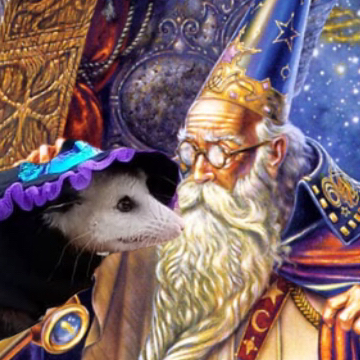- cross-posted to:
- [email protected]
- cross-posted to:
- [email protected]
VdB 152 is technically just one part at the end of the dark nebula, and there are a number of other cataloged structures in this image. Captured from August 16-25, 2023. Broadband data from a Bortle 3 zone (Deerlick astronomy village), Ha from Bortle 9.
Places where I host my other images:
-
TPO 6" F/4 Imaging Newtonian
-
Orion Sirius EQ-G
-
ZWO ASI1600MM-Pro
-
Skywatcher Quattro Coma Corrector
-
ZWO EFW 8x1.25"/31mm
-
Astronomik LRGB+CLS Filters- 31mm
-
Astrodon 31mm Ha 5nm, Oiii 3nm, Sii 5nm
-
Agena 50mm Deluxe Straight-Through Guide Scope
-
ZWO ASI-290mc for guiding
-
Moonlite Autofocuser
Acquisition: 30 hours 15 minutes (Camera at -15°C)
BB exposures at half unity gain (76/15), Ha at unity gain (139/21)
-
Ha - 102x600"
-
L - 200x120"
-
R - 70x120"
-
G - 70x120"
-
B - 68x120"
-
Darks- 30
-
Flats- 30 per filter
Capture Software:
- Captured using N.I.N.A. and PHD2 for guiding and dithering.
PixInsight Preprocessing:
-
BatchPreProcessing
-
StarAlignment
-
ImageIntegration per channel per panel
-
DrizzleIntegration (2x, Var β=1.5)
-
Dynamic Crop
-
DynamicBackgroundExtraction
Luminance Linear:
-
BlurXterminator
-
NoiseXterminator
-
ArcsinhStretch + HistogramTransformation to stretch to nonlinear
Ha Linear:
These steps largely follow the ones in NightPhoton’s advanced narrowband combination guide.
-
Combine Ha with Red channel (HRR palette)
-
BackgroundNeutralization
-
ColorCalibration
-
StarXterminator to completely remove stars
-
PixelMath to subtract red continuum spectrum, leaving just Ha signal
-
HistogramTransformation to stretch nonlinear
-
NoiseXterminator + a little concolution
-
CurvesTransformation to adjust black point/contrast
differing from the guide above, the background was a dark gray rather than clipped to black since this is more faint structure addition than bright structure
RGB Linear:
-
SpectrophotometricColorCalibration
-
Slight SCNR Green
-
HSV repair
-
ArcsinhStretch + HistogramTransformation to stretch to nonlinear
duplicate stars only was made and stretched to nonlinear using a less aggressive arcsin+HT for star addition later
Nonlinear Processing:
-
Various curve adjustments for lightness, contrast, hue, saturation, etc (with varying lum/star masks)
-
LRGBCombination using stretched L as luminance
-
DeepSNR
-
More curves
-
PixelMath to add stretched Ha per the advanced narrowband guide above
-
BlurXterminator for star reduction
Next few steps kinda follow along with this independent starless processing tutorial for manually combining stars via re-linearization
-
StarXterminator
-
HistogramTransformation to unstretch (also applied to duplicate stars early image from earlier)
-
PixelMath to combine starless + stars only images
-
HT to stretch everything back to nonlinear
-
MultiscaleLinearTransform for chrominance noise reduction
-
LocalHistogramEqualization (2 rounds of this at scales 68 and 384 with lum masks)
-
ColorSaturation to selectively saturate reds
-
Even more curves
-
Resample to 70%
-
Annotation
Here is an alternative Piped link(s): https://piped.video/sJeuWZNWImE?t=40
Piped is a privacy-respecting open-source alternative frontend to YouTube.
I’m open-source, check me out at GitHub.
-
Jeez, that’s beautiful.
It’s a duck walking on reflective water no one tells me otherwise




